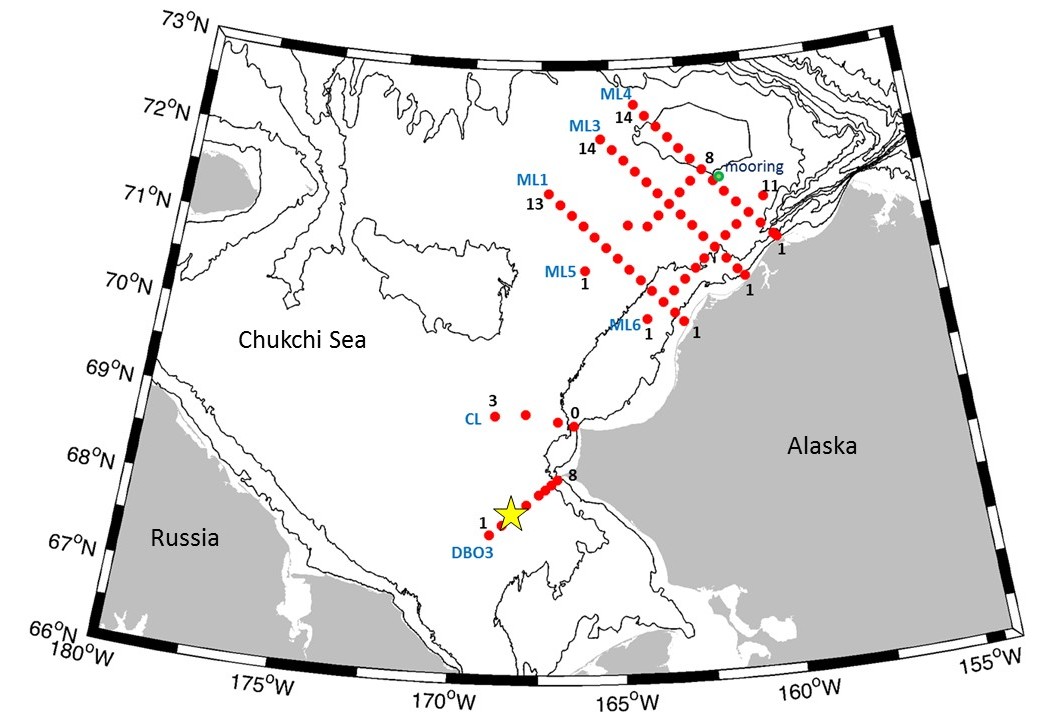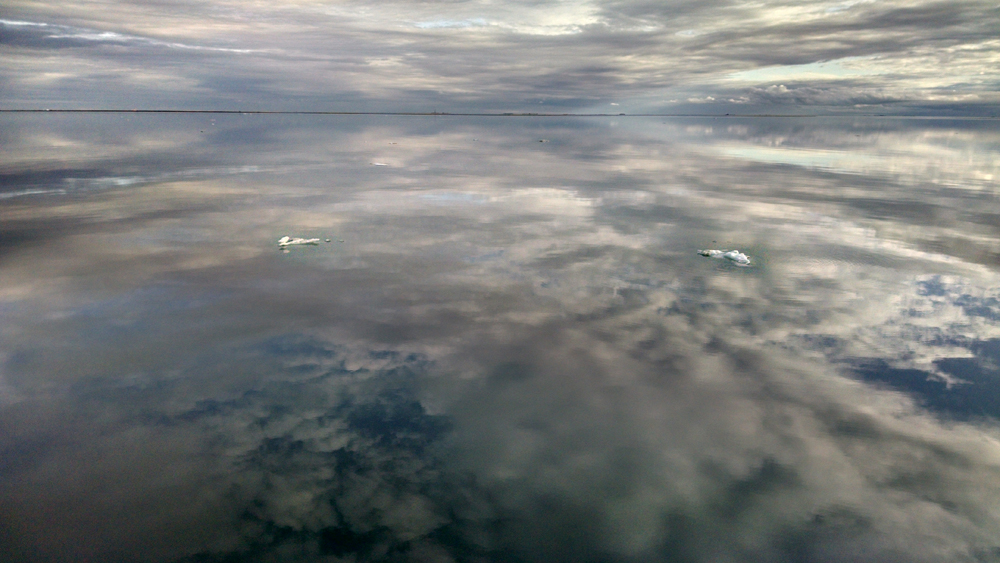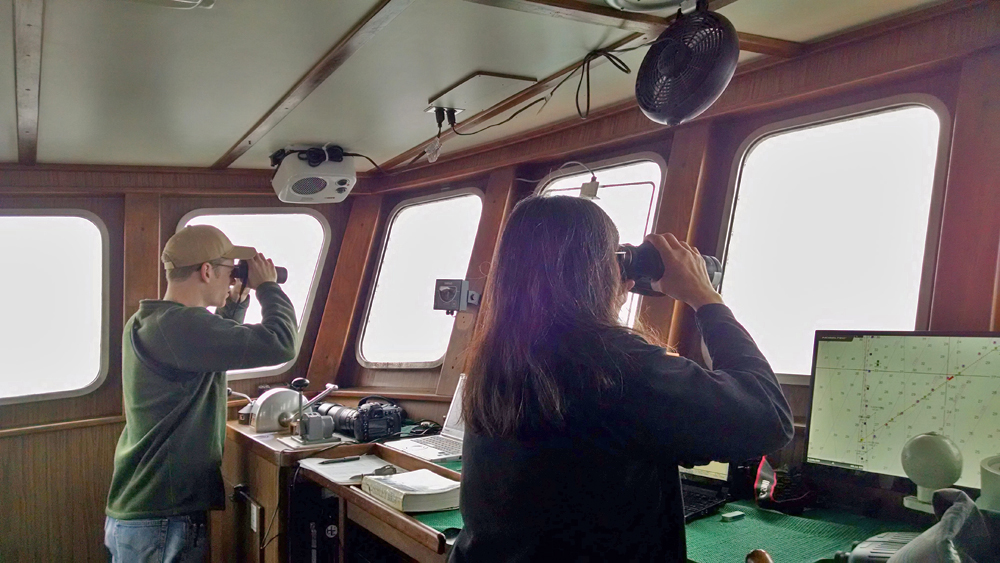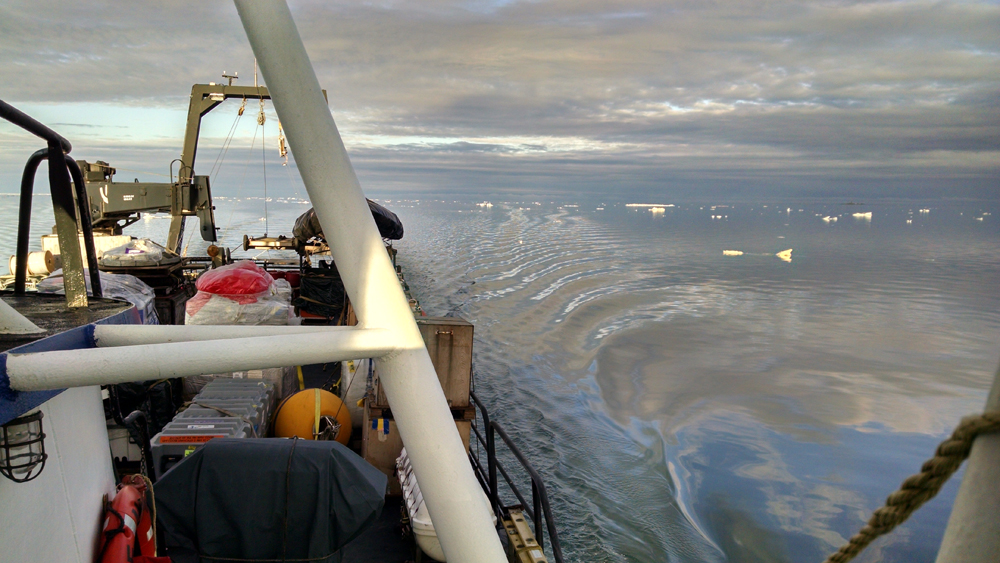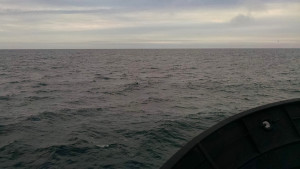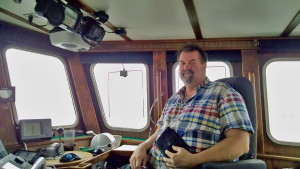We have been transiting from Prudhoe Bay to our first sample station for the past several days (yellow star in location map above shows current location), and were lucky to start out with glassy seas. Unfortunately, that was not meant to last, and conditions returned to their normal gray, windy, and foggy state. Since we are currently transiting, that means that the seabird and marine mammal observers have been surveying and getting to know each other very well.
Glassy seas and sea-ice
Dan Cushing and Suzanne Yin surveying for seabirds and marine mammals
Dan and I, the seabird observers, take turns surveying for seabirds from the wheelhouse. We record all seabirds we see that are within 300 meters of the port (left) side of the ship into a computer program. We record information like the species, how many we see, how far they are from the ship, and if they are sitting on the water or flying. When we were near the ice in the Beaufort Sea, we saw birds like Black Guillemots, Pacific Loons, Arctic Terns, and Red Phalaropes. We are now in the Chukchi Sea, and we are seeing birds like auklets, murres, Black-Legged Kittiwakes, and Short-Tailed Shearwaters. Our most interesting sightings so far have been of the elusive Kittlitz’s Murrelets.
Norseman II on glassy seas
More usual surveying conditions!
The two marine mammal observer, Suzanne Yin and Sonia Groves, also take turns surveying from the wheelhouse, so there is always one seabird and one marine mammal observer on watch when the ship is transiting. They use binoculars to look for marine mammals out to the horizon and record their sightings into a computer program. So far, they have seen gray whales, a possible bowhead whale, bearded seals, and many more mammals that could not be identified. During this cruise, Sonia really wants to see walrus, while Suzanne is hoping for more gray and bowhead whales, along with belugas and walrus.
With us in the wheelhouse, we also have Captain Mike Hastings and First Mate Jim Howard. Mike is working the night shift because most research operations will be taking place at night. Jim is working the day shift, and is keeping the seabird and marine mammal observers on their feet with all sorts of jokes and stories.
First mate Jim Howard on watch

